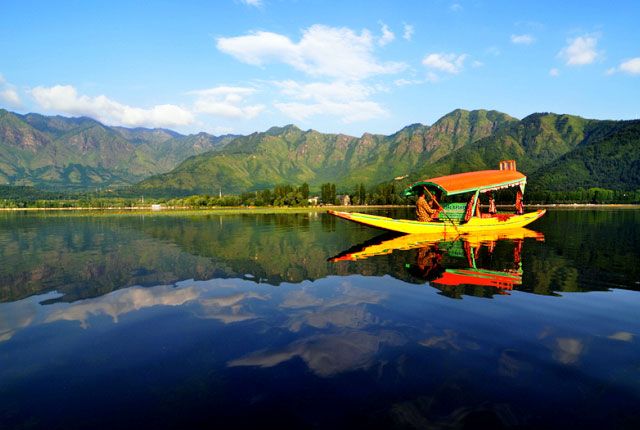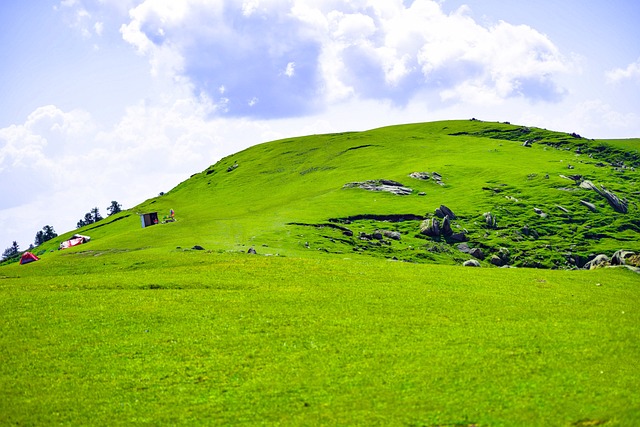
How to reach Drass
Table of Contents
ToggleOverview
Often referred to as the “Gateway to Ladakh,” Drass—which is tucked away in the Himalayas—beckons adventurous visitors with its unvarnished beauty and historical importance. At roughly 3,280 meters (10,760 feet), Drass is known as the second-coldest place humans live on Earth. Still, the summer months reveal vast meadows, tough mountain routes, and a rich tapestry of culture even with its cold winters. This thorough guide will highlight every feasible path, useful advice, and insider knowledge to guarantee a flawless road trip for anyone looking for how to get to Drass.
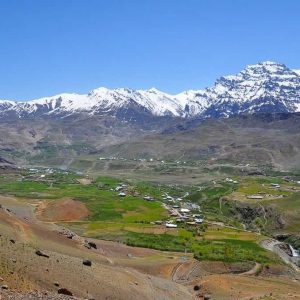


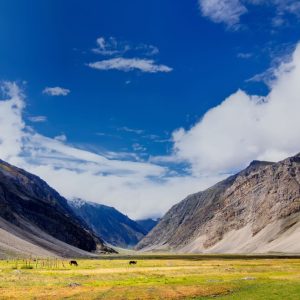
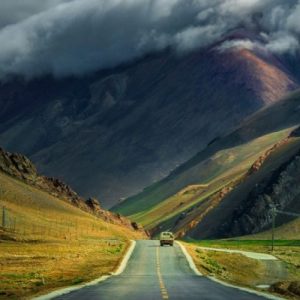
Why should one visit Drass?
For various reasons, Drass enthralls guests.
Battlegrounds of the Kargil War are tucked away nearby, and the Drass War Memorial pays moving tribute to the troops.
Towering peaks like the 17,350owicz meter-high Nun Kun massif predominate in the skyline.
Experience the friendliness of local Ladakhi hospitality in tea shops and small communities.
The nearby valleys abound in migratory birds, mountain ibex, and spotted marmots—nature.
Knowing the mechanics of Drass Ladakh access is essential whether you’re creating a thorough Drass travel guide or looking for a calm offbeat location.
Ideal Time to Go
Timing your visit to Drass can help to distinguish a stressful experience from an amazing adventure:
June through September is Peak Season
Once snow melts from Zoji La Pass—usually by late May—road access is totally free. Daytime temperatures are between 10°C and 20°C. Perfect for enjoying unhindered views of the Himalayas and avoiding altitude-related problems.
Seasonal Shoulders: May and October
May’s road closures could still be caused by residual snow; October trips run the danger of early snowfall. There is less accommodation; crowds thin out.
Winter (November to April)
Winter brings sub-zero temperatures, usually falling below –30°C. The Zoji La Pass is still closed, hence road access to Drass is essentially impossible.
Rights and Laws
Visiting India’s border areas calls for specific permits:
- Protected Area Permit (PAP) is needed for foreigners.
- Found either online or via registered travel agents in Leh/Srinagar.
- Ten to thirty days valid; extendable locally.
- Inner Line Permit (ILP): Needed for Indian nationals from other states while east of Drass.
- Found in the Leh DC office or assigned counters in Srinagar and Leh.
- Always carry several copies of your photo IDs and permits; local checkpoints are strict on paperwork.
How To Reach Drass
i. By Road:
For many, the classic Srinagar to Drass road trip across Zoji La Pass (height 3,528 m) is the pinnacle Himalayan experience:
Distance: About 145 miles to Drass town; if one keeps on to Kargil, the total comes to almost 200km.
Depending on road conditions and temperature, duration is 4–6 hours.
Highlights on the route:
50 km Srinagar → Ganderbal: Well-paved NH1; verdant river valleys and meadows.
Ganderbal → Sonamarg (80 miles); beautiful scenery winds across the Sindh river.
Sonamarg → Zoji La (15 km); monsoonal occasional landslides; hairpin bends.
Zoji La → Drass (62 km) follows a slow down on rocky ground, forested stretches, and alpine forests.
Various Transportation Choices:
Rental SUVs or bikes from Srinagar should guarantee good ground clearance.
Available from Srinagar’s airport and main bus terminal, shared taxis and cabs can be negotiated fixed rates.
J&K Road Transport Corporation runs local buses; however with less seats and slower speed, they are reasonably priced.
2. By Road from Leh:
Should you already be visiting Ladakh, a Leh to Drass schedule reveals the great Zanskar range:
Distance: Through Kargil, around 210 kilometers.
Given altitude difficulties and less service stations, duration: 7–9 hours.
Highlights of a route:
Leh ← Karu (35 km): magnificent mountain vistas on scenic lowlands.
Karu → Lamayuru (120 km): Ancient monasteries dotted over desert settings.
Lamayuru → Kargil: Former town close to the Suru river 45 kilometers.
Kargil -> Drass (30 km) last descent into Drass valley.
Transportation Alternatives:
Many Leh-based agencies have Drass day tours or combination Kargil-Drass packages.
Taxis with shared ownership Leave Leh’s main market early in morning.
3. By road and air combined
Although Drass does not have an airport, surrounding air links will simplify your trip:
Srinagar International Airport (SXR) is nearest, 145 km away; flights from Delhi, Mumbai, Bangalore.
Located 210 miles distant, Leh Kushok Bakula Rimpochee Airport (IXL) flies from Delhi, Chandigarh.
Hire a taxi or join a shared taxi to cover the remaining distance by road following landing. To prevent delays, pre-book your car during busy season.
4. By Train plus Road
Although the rail system does not immediately reach Drass, surrounding hubs simplify the travel:
Jammu Tauri (JAT) 650 kilometers from Drass is connected to big Indian cities.
510 km away, Udhampur (UHP) is picturesque but slower because of meter-gauge lines.
From the station to Srinagar or Kargil, get a cab; thereafter, follow the road routes described above.
Early-morning drives after overnight sleeper trains assist to break up the long ride.
Origin and Distance and Route Details Distance to Drass Roughly
Travel Time: Main Points of Interest
- Srinagar 145 kilometers in 4 to 6 hours.
- Zoji La Pass in the Sonamarg valley Leh 210 kilometers 7–9 hours
- Lamayuru Monastery, Kargil town; 650 miles, 16–18 hours;
- Srinagar Airport (Air) 4–6 hours, 145 km.
- Direct road connectivity via NH1 * include road trip and overnight rail.
Road Conditions and Safety Suggestions
- Seasonal Closures: From November to May Zoji La stays snowbound. Before travel, always review local traffic bulletins.
- Monsoon (July–September) causes sporadic rockfalls; avoid mid-August travel.
Vehicle preparedness:
- For rough stretches, high-clearance 4×4 advised.
- Stow additional gasoline, engine oil, spare tires, and basic tools.
Driving Better Practices:
- Start early—before sunrise—to escape changes in midday weather.
- Especially in hairpin turns, keep reasonable speeds.
- Downhill steep hills use low gears.
Food choices and lodging
Though far-off, Drass contains a few guesthouses and restaurants, hotels and homestays:
- Tidy, family-run rooms with standard heating systems.
- Book ahead of time for maximum view of snow-capped mountains.
- To fight the chill, sample delicious Chai, momos, and piping-hot local thupka.
- If you have special dietary requirements, carry packaged snacks; there are few vegetarian and non vegetarian alternatives.
- Fuel Stations: Just one petrol pump in Drass; top-up wherever you can before Zoji La or Lamayuru.
- Diesel availability may vary; if you are on a self-drive road journey to Drass, pack extra containers.
Altitude Sickness and Advice on Health
Mild altitude sickness is somewhat prevalent at heights above 3,000m. To guarantee a friendly Drass schedule:
- Acclimatize Gradually: Before climbing higher, spend one to two days at Leh (3,500) or Srinagar (1, 525).
- Keep Hydrated: Daily drink three to four liters of water; stay away from alcohol and heavy meals.
- Medicines: If you have AMS history, carry prescribed Diamox (acetazolamide).
See Symptoms: Headache, nausea, vertigo—descend right away if symptoms get bad.
Essential Packing
Your Drass suitcase should strike a mix between warmth and mobility:
- Clothing: fleece layers, windproof coats, thermal innerwear, robust boots.
- Accessories include woolen gloves, lip balm, sunscreen (SPF 50+) and UV-protected sunglasses.
- Electronics include extra camera batteries, auto chargers, power banks—cold eats batteries faster.
- Documents include several copies of permits, ID evidence, travel insurance records.
Near Drass: Local Attractions
Beyond the travel itself, Drass presents unusual quirky treasures:
- Set against the snowgetic mountains, the Drass War Memorial pays moving tribute to the 1999 fighting.
- The unspoiled meadow noted for its wildflowers and wildlife in the Mushkaf Valley
- Popular among experienced mountaineers, Shingo La Glacier Trek is a difficult high-altitude journey beginning close to Drass.
- Local tea stands: Over sweet milky tea and endless tales of frontier life, interact with friendly residents.
Sustainable Travel Advice
As you move across this delicate ecosystem:
- Leave No Track: Store all non-biodegradable trash.
- Respect Wildlife: Steer clear of feeding animals; see them from a distance.
- Support Local: Eat at homestays and shop at village markets to help the nearby businesses.
- Apply Policies: Respect limited Kejriwal area guidelines and avoid straying from approved routes.
Conclusion
Starting a road trip to Drass is more than just a technical obstacle; for those lured to the rugged core of the Himalayas, it is a rite of passage. This guide provides practical advice whether your Srinagar to Drass distance is being plotted on Google Maps, you are looking for the best Drass travel guide, or you are comparing ideal times to visit Dras. Your Drass trip will be both responsible and enriching by combining route planning, safety precautions, cultural highlights, and sustainable practices. Get ready, schedule carefully, and get ready to be rewarded by tall mountains, cold air, and an experience that will last long after you go down the last hairpin bend.
How to book Ladakh tour?
Contact a travel agency that specializes in Kashmir tours. You can reach out to the following for assistance:
- Phone:
- +91 7889 655596
- +91 7006 891267
- Email:
Inquire about tour packages, itineraries, and pricing, and confirm your booking for a memorable winter experience!
People Also Ask
How do I reach Drass from Srinagar?
You can drive from Srinagar via the Zoji La Pass on NH1—approximately 145 km in 4–6 hours—or take a shared taxi or J&KRTC bus, ensuring the pass is open (typically late May to October).
What is the best time to visit Drass?
The ideal window is June to September, when Zoji La Pass is clear, daytime temperatures range from 10°C to 20°C, and road conditions are safest.
Do I need permits to travel to Drass?
Indian nationals require an Inner Line Permit (ILP) beyond Drass, and foreign tourists need a Protected Area Permit (PAP), both obtainable in Leh or Srinagar.
Is Srinagar to Drass distance feasible in a day trip?
Yes—at about 145 km one-way, many travelers do a day trip by leaving Srinagar early, but an overnight stay in Drass or Kargil is recommended for comfort.
Can I drive a bike to Drass?
Absolutely—many motorcyclists ride the Srinagar-Leh highway via Zoji La. Choose a high-clearance bike, carry spares, and check pass conditions in advance.
What are the nearest airports to Drass?
Srinagar International Airport (145 km) and Leh Kushok Bakula Rimpochee Airport (210 km) are the closest; both connect to major Indian cities.
Are there direct trains to Drass?
No; the nearest railheads are Jammu Tawi (650 km) and Udhampur (510 km). From there, you must continue by road via Srinagar or Kargil.
How long does it take from Leh to Drass by road?
The Leh–Kargil–Drass route spans about 210 km and takes 7–9 hours, depending on stops, altitude acclimatization, and road conditions.
What is the altitude of Drass?
Drass sits at roughly 3,280 meters (10,760 feet) above sea level, making acclimatization essential for newcomers.
What safety precautions should I take on Zoji La Pass?
Start before sunrise, carry extra fuel, use low gears on descents, and monitor weather bulletins for landslides or snow closures.
Are shared taxis available to Drass?
Yes—shared cabs depart daily from Srinagar’s airport and bus stand, and from Leh’s main market for travelers coming via Ladakh.
What road conditions can I expect in Drass?
The route features narrow hairpin bends, occasional landslide zones in monsoon, and unpaved patches—4×4 vehicles are highly recommended.
Can I hire a private cab from Kargil to Drass?
Private taxis are available in Kargil; rates can be negotiated, and they offer flexibility to stop at viewpoints like the Drass War Memorial.
Is fuel easily available in Drass?
There’s one petrol pump in town; top up before Zoji La or Lamayuru, and carry spare diesel if you’re on a self-drive trip.
How do I avoid altitude sickness en route to Drass?
Acclimate in Srinagar or Leh for 1–2 days, stay hydrated, avoid alcohol, and consider Diamox if you have prior AMS history.
What accommodation options exist in Drass?
Family-run guesthouses and homestays offer basic heating and hot water; book ahead during peak season for the best views.
Can I combine a Drass trip with a Kargil war memorial visit?
Yes—the Drass War Memorial is just outside town, making it easy to combine historical sightseeing with your Drass itinerary.
Are there vegetarian dining options in Drass?
Roadside cafés serve momos, thupka, and simple vegetarian dishes; pack snacks if you have strict dietary needs.
What unique attractions are near Drass?
Explore Mushkaf Valley’s wildflower meadows, the challenging Shingo La Glacier trek, and vibrant local tea stalls.
Is it safe to travel to Drass in monsoon?
Monsoon (July–September) can trigger landslides; travel only if necessary and stay updated on road bulletins.
How should I pack for a Drass road trip?
Include thermal layers, windproof jackets, UV sunglasses, sunscreen (SPF 50+), power banks, and spare camera batteries.
Can foreign tourists travel independently to Drass?
Yes—with a valid PAP and itinerary submitted in advance, foreign nationals can self-drive or hire private transport.
What wildlife might I see around Drass?
Keep an eye out for marmots, ibex, Himalayan snowcocks, and migratory birds in the alpine valleys.
Is mobile network available in Drass?
Coverage is intermittent; BSNL often has the best reach, but plan for offline navigation and carry a satellite phone if critical.
How do I plan a multi-day Drass and Leh circuit?
Create a Leh → Lamayuru → Kargil → Drass → Sonamarg → Srinagar loop over 7–10 days, allowing for acclimatization, sightseeing, and buffer for weather delays.



